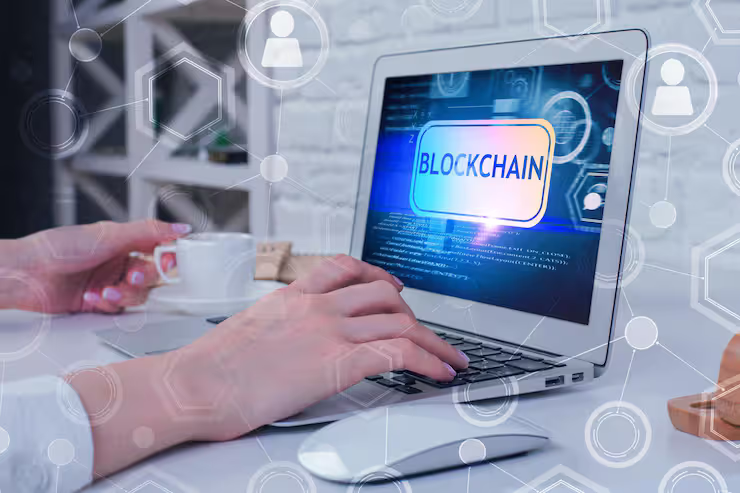Explore Blockchain: A Clear Guide to Technology, Trends & Tools
Blockchain is a digital laser system that records transactions in a network of computers. It was designed to support Cryptocurrency such as Bitcoin and Atherium without the need for a central authority. Each block in the series consists of a list of transactions; When a block is added, it is almost impossible to change it. This structure improves self-confidence and openness.
Blockchain means something, as it provides new ways of storing, sharing and verifying information with increased security and efficiency.

Why Does It Mean Something Today
-
This provides tamper-proof items for important transactions.
-
This removes the requirement for middlemen, which can reduce cost and delay.
-
It supports digital ownership, which is important in finance, real estate and digital goods.
That Affects That
-
Financial institutions that use digital assets and payment networks.
-
Digital ID systems and regulatory equipment search.
-
Companies looking at to track goods or verify contracts.
-
Consumers using cryptocurrency, smart contracts or blockchain-based apps.
Resolves Problems
-
Prevents unauthorized changes in items.
-
Increases confidence in the system with many users.
-
The speed of the transaction, especially outside the limits.
-
Transparent data improves accountability through tracking.
Newer Updates
The blockchain landscape has changed rapidly the year before, especially in economic and legal fields.
-
The token about assets becomes more common. Physical assets such as real estate and investment funds are converted to digital symbols for easy trade and ownership tracking.
-
Large banks and financial companies construct their own blockchain platforms to manage token money, improve efficiency and control.
-
StableCoins and digital currencies attract attention from both companies and regulators as a quick alternative to traditional funds.
-
National blockchain policy is launched by many countries to support and regulate its use.
-
The legislation focusing on separating regulatory roles and establishing clear rules for digital assets also develops in different fields.
These trends suggest a change to formally adopt from experimentation, and collaborate with several institutions, authorities and developers to integrate blockchain into real services.
Laws or Guidelines
United States
-
New laws define how digital assets such as stabechoin should be done and controlled.
-
The agencies clarify the type of blockchain-based property under the rules of securities or goods.
-
The purpose of some proposals is to limit the authority's use of digital central banks, focusing on privacy and control.
EU
-
The European Union has introduced an overview to regulate the crypto-asset, which ensures consistent rules for companies and consumers.
-
These guidelines require transparency from publishers, detention providers and trade platforms.
Other Countries
-
Many nations establish digital assets to manage the use of blockchain.
-
Blockchain is introduced to public services, such as land journals, identity confirmation and ballot system.
Tools and Resources
Blockchain technology can be detected through a variety of units, platforms and educational resources. There are some often used types:
Analysis and tracking tools
-
Cryptocurrency prices, blockchain transactions and wallet address platforms.
-
Portfolio Trackers who help users manage and analyze digital assets.
-
Tax reporting of equipment calculating capital gains and compliance registers.
Symbols and smart contract platforms
-
Software platforms allow developers to create digital symbols representing assets such as stock, property or collectible.
-
Smart contract tools automate agreements such as payment or service relationships.
Security and compliance equipment
-
Code Audit Services that detect errors or security risk in blockchain projects.
-
Data Privacy tools that help meet regulatory standards such as encryption and user control.
Academic platform
-
Courses, training programs and interpreters to help users understand basic blockchain.
-
Research publication on cases of industry trends, rules and new use.
Wallet and exchange
-
Digital wallets that certainly store cryptocurrency and symbols.
-
Platforms to buy, sell and act digital assets.
These units allow individuals and companies to interact with blockchain safely and efficiently.
Question to Ask
What is blockchain and how does it work?
Blockchain is a system for information recording in a way that makes it difficult or impossible. The data is stored in the block, which is chronologically connected. Each block is confirmed by network participants before they become part of the chain.
What is TokenNail?
Tokenization is the process of converting a real world property to digital symbols on a blockchain. This makes it easier to share, act or manage ownership of that property.
Is blockchain safe?
Blockchain is safe by design. It uses encryption, decentralized verification and consensus mechanisms to prevent tampering. However, apps produced on blockchain should also be revised safely and well to avoid abuse.
Can blockchain be regulated?
Yes. Governments and finance agencies are now regulating blockchain-based assets to prevent consumer safety and illegal activity. Clear policies arise to define how companies can continue, act and store digital assets.
What are smart contracts?
Smart contracts are digital deals run on blockchain. Without the need for human intervention, they are performed automatically. They are usually used in financial, insurance and supply chains.
Final Thoughts
Blockchain has moved to a basic tool with a niche technique with real influence. It now plays a role in finance, authorities, education, logistics and identity systems. In 2025, the impact continues as laws develop and companies adopt new applications.
While the technology itself provides the underlying safety and openness, its long-term value will depend on how it is operated, integrated and maintained. The future of blockchain is not only in Cryptocurrency, but how we build trust in digital systems around the world.
